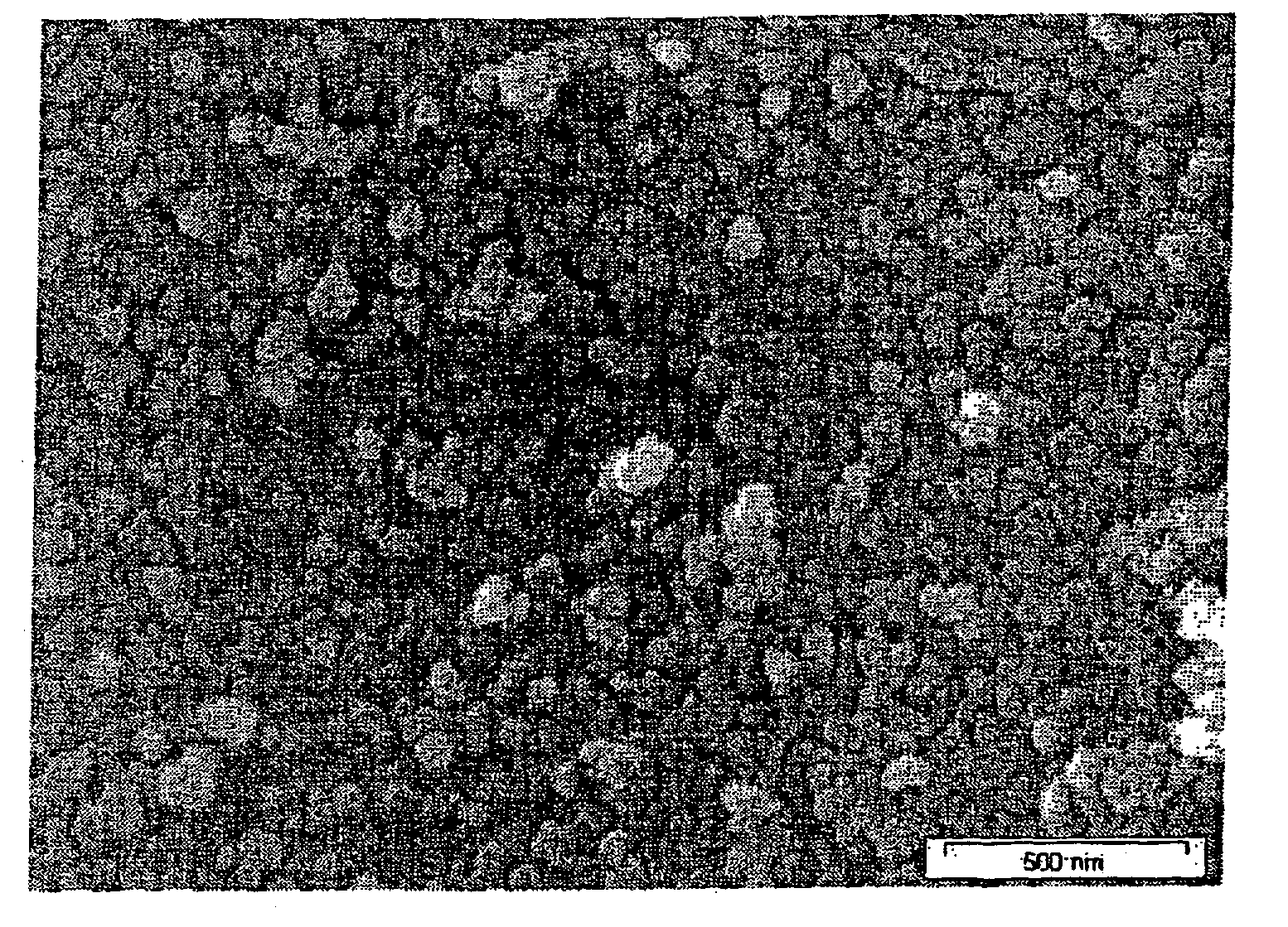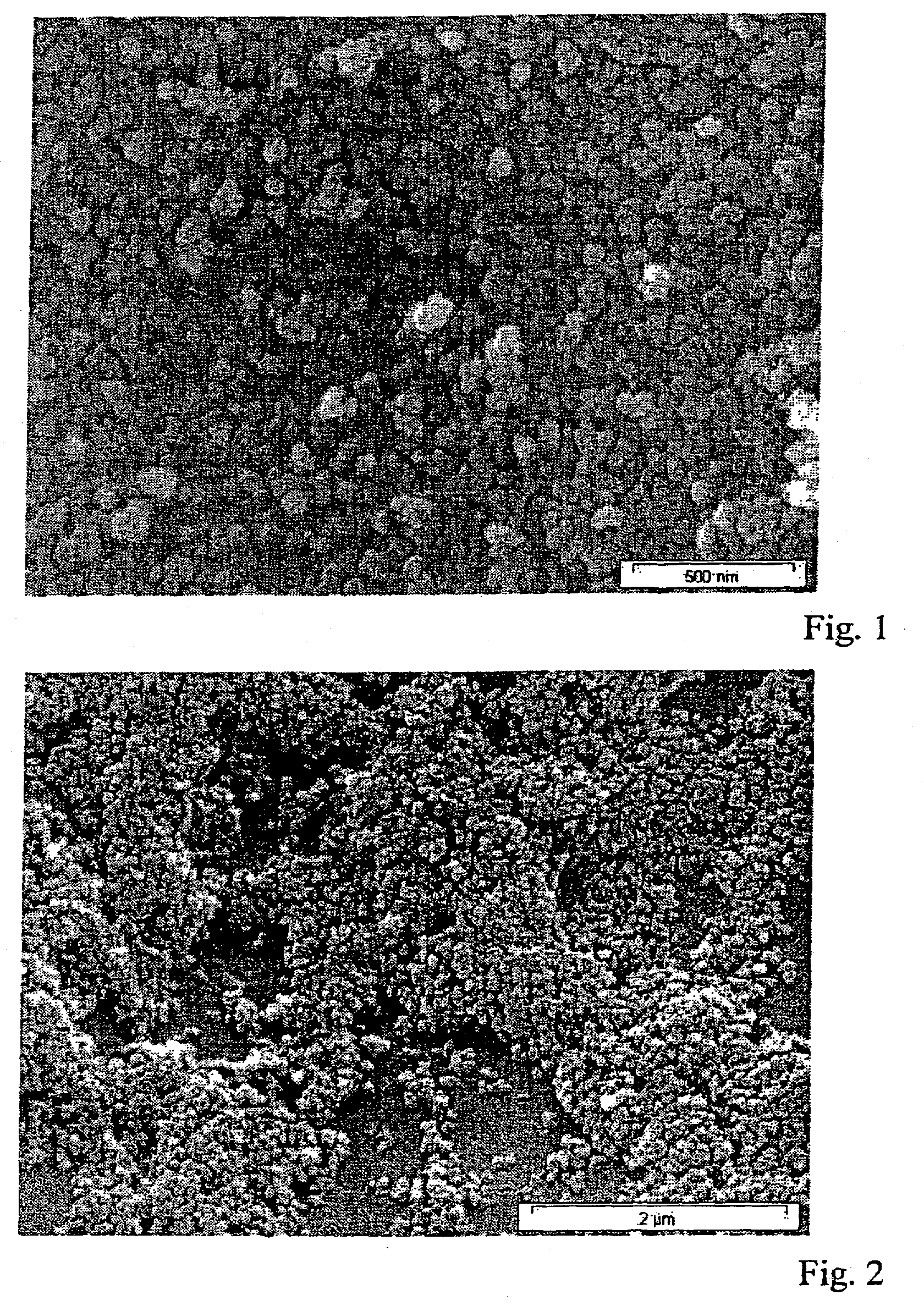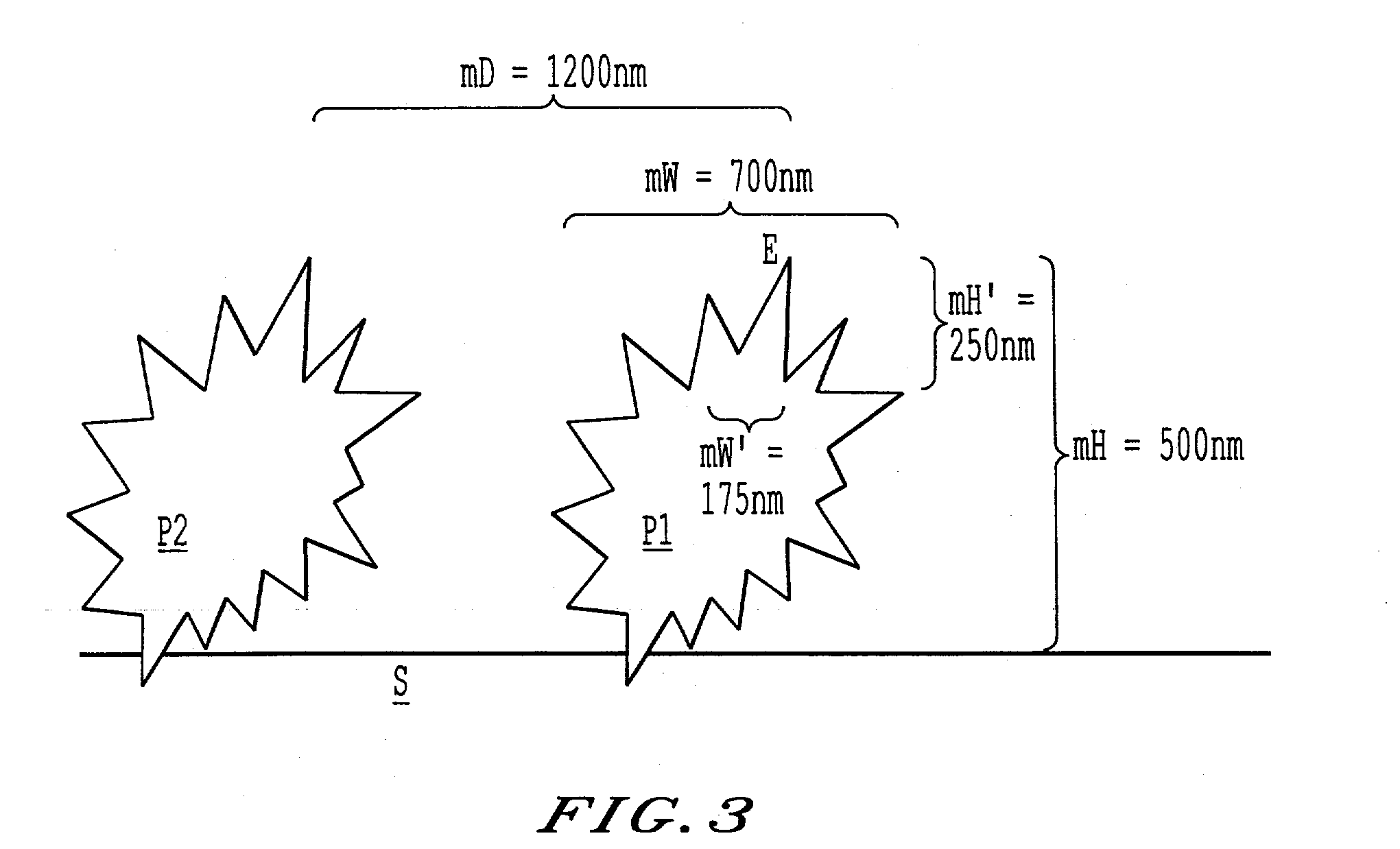Surfaces which are self-cleaning by hydrophobic structures, and a process for their production
a hydrophobic structure and surface technology, applied in the field of surface, can solve the problems of no longer providing the desired effect, specific particle size distribution, and few industrial systems available for the abrasion-resistant bonding of hydrophobic primary particles
- Summary
- Abstract
- Description
- Claims
- Application Information
AI Technical Summary
Benefits of technology
Problems solved by technology
Method used
Image
Examples
example 1
Self-Cleaning Surface Based on a Polypropylene Surface
[0036] Decalin is heated to a temperature of 80.degree. C. The decalin comprises 3% by weight of fumed silica (Aerosil R 8200, Degussa AG). Aerosil R 8200 is a hydrophobic Aerosil with a primary particle size distribution of from about 5 to 50 .mu.m. An ultrasound bath is used to deagglomerate agglomerated particles. The solution is kept continuously stirred. A polypropylene sheet of dimensions 5.times.5 cm is dipped in the suspension for about 3 sec. Once the solvent has been dried off, the sheet is dipped for a second time in the suspension for 3 sec. FIG. 1 shows an SEM of the resultant self-cleaning lotus surface. The SEM clearly shows that the particles have been bonded into the polymer matrix. The resultant surface has the same chemical stability as the polypropylene and exhibits a very good lotus effect. Water droplets roll off at an angle of as little as 4.degree., and if the surface is soiled using carbon black, even ver...
example 2
Self-Cleaning Surface Based on a Polyester Surface
[0037] 3% by weight of fumed silica (Aerosil R 8200, Degussa AG) are suspended in hot dimethyl sulfoxide (DMSO). A commercially available polyester sheet of dimensions 5.times.5 cm is dipped in this solution for 5 sec. FIG. 2 shows an SEM of the primary particles bonded into the polyester. Here again, a very good self-cleaning effect (lotus effect) is observed. Water droplets roll off spontaneously at an angle as small as 14.degree. and if the surface is soiled with carbon black even very small amounts of water are sufficient to render the surface again completely free from carbon black.
PUM
| Property | Measurement | Unit |
|---|---|---|
| temperature | aaaaa | aaaaa |
| temperature | aaaaa | aaaaa |
| temperature | aaaaa | aaaaa |
Abstract
Description
Claims
Application Information
 Login to View More
Login to View More - R&D
- Intellectual Property
- Life Sciences
- Materials
- Tech Scout
- Unparalleled Data Quality
- Higher Quality Content
- 60% Fewer Hallucinations
Browse by: Latest US Patents, China's latest patents, Technical Efficacy Thesaurus, Application Domain, Technology Topic, Popular Technical Reports.
© 2025 PatSnap. All rights reserved.Legal|Privacy policy|Modern Slavery Act Transparency Statement|Sitemap|About US| Contact US: help@patsnap.com



